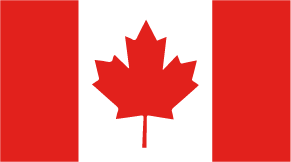November 20, 2015 | Industry Insights
The Effect of the Panama Canal Expansion on the Shipping Industry

 The Panama Canal’s $5.25 billion expansion, scheduled to open in April 2016, is expected to have a major impact on the global trade and shipping industry, specifically in the way in which cargo is handled and transported throughout North America. The expansion is set to accommodate a new generation of larger cargo ships, with America’s ports pouring billions into upgrades in anticipation of their arrival.
The Panama Canal’s $5.25 billion expansion, scheduled to open in April 2016, is expected to have a major impact on the global trade and shipping industry, specifically in the way in which cargo is handled and transported throughout North America. The expansion is set to accommodate a new generation of larger cargo ships, with America’s ports pouring billions into upgrades in anticipation of their arrival.
The larger canal will accommodate a new line of Post-Panamax vessels — supertankers, container and passenger ships. According to the Washington Post, this new generation of vessels — which can hold upwards of 18,000 20-foot-equivalent units (TEUs), considerably more than the Panamax vessels of old — already carries 45% of the world’s cargo while only making up 16% of the world’s container fleet. By 2030, Post-Panamax vessels could represent 62% of the total container ship capacity.
East Coast ports are spending billions to deepen their harbors, increase their bridge heights and transform their infrastructure to accommodate larger vessels that bring with them more cargo and potentially more business. For example, as cited in an article by Inbound Logistics, the Port Authority of New York and New Jersey is in the middle of a $1-billion project to raise the Bayonne Bridge so it can accommodate the larger, new Panamax vessels. In Savannah, the Georgia Ports Authority and the Army Corps of Engineers have commenced dredging the port channel to 47 feet. PortMiami has completed a $1 billion tunnel beneath Biscayne Bay that connects the port to the Interstate designed to circumvent downtown congestion. The Port of Baltimore is already deep enough to handle new Panamax vessels. It is currently focused on improving terminal velocity—increasing gate truck lanes, creating a “back gate” to handle empty containers, expanding its fleet of RTG cranes, and investing $10 million to improve the terminal’s main access road.
With all of this investment and construction going on at various ports south to north, the effect of the Panama Canal in terms of infrastructure is apparent. According to the American Association of Port Authorities, East and Gulf Coast ports, and their private sector partners, are expected to invest nearly $30 billion between 2012 and 2016. Moreover, West Coast ports will contribute another $15 billion.
How immediately this influx of new business will materialize due to easier access to East Coast ports from Asia by way of the new Panama Canal is yet to be determined. “It’s not like you’re going to have this huge wave of large ships that on day one will start flowing through the canal,” says Mike Kilgore, president and CEO of Chainalytics, a global supply chain consulting firm, in an article published in Blueprint by CBRE. “Shippers often design their supply chain around having multiple ports to avoid placing all their risk in one port,” says Kilgore.
But some already see a shift with East Coast ports taking market share from those on the West Coast. Recent slowdowns during the International Longshore & Warehouse Union’s (ILWU) contract negotiations helped many shippers to lose faith in West Coast ports and move shipments to the East Coast, increasing that market share shift. The Panama Canal expansion could make it even easier for shippers to move their imports and exports from West Coast ports to East Coast ones. According to World Maritime News, up to 10% of container traffic to the U.S. from East Asia could shift from West Coast ports to the East Coast by 2020. In 2014, about 35% of container traffic from East Asia to the U.S. arrived at East Coast ports. According to the report, current growth trends would push that share to 40% by 2020 without the canal’s expansion. But with the canal expansion in place, the East Coast’s share could reach 50% — a 10% increase in market share.
Roanoke Trade specializes in providing insurance solutions for transportation intermediaries and logistics service providers. As we enter 2016, we will continue to look at the impact the Panama Canal expansion will have on North America. For information about our insurance products and risk management services, please give one of our professionals a call at 1-800-ROANOKE (800-762-6653).





